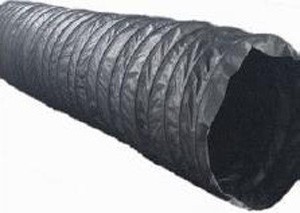Overview
Are you looking for a ventilation and exhaust hose that is both robust and durable, with excellent safety performance? Our PVC spiral flame-retardant hose is the ideal choice.
This hose is made of high-quality materials with an internally embedded, sturdy steel wire spiral skeleton, forming a unique pipe wall structure. It's more than just an ordinary pipe; it's a complete pressure-resistant, flame-retardant, and corrosion-resistant air delivery system.
Its core advantage lies in the perfect combination of "spiral" and "flame retardancy." The steel wire spiral structure gives it excellent pressure resistance and flexibility, making it resistant to crushing; while the special flame-retardant PVC material effectively prevents the spread of flames, adding a solid firewall for your operational safety.
Advantages
Use high quality raw materials to ensure product quality;
Being engaged in the field of ventilation system for more than 30years, have rich experience in ventilation design;
Cooperate with several research institutes and have the latest technology;
Several automatic ducting welding production lines with a monthly output of 20,000 flexible ventilation tubes with assured batch order lead time;
PVC spiral tubes are available in custom sizes to ensure a perfect fit for your requests;
The spiral ventilation duct is coupled with zipper and Velcro. The extra fabric on which the zipper/Velcro is sewed is welded to the flexible duct body to ensure that there are no sewing needle eyes throughout the ducting, reducing air leakage.
Specifications
Material | PVC coated fabric+ steel wire |
Color | Yellow or Black |
Diameter | 300- 3100mm |
Use temperature | -40℃ ~ +100℃ |
Coupling Type | Zipper, Velcro |
Helix | Steel wire |
Flame retardant(optional) | NFPA-701, B1, B2 or M2 |
Anti-static (optional) | less than 108ohm |
Application
This duct is ideal for the following applications:
Highway and railway tunnels: Supply and exhaust air during construction.
Mining: Forced ventilation in mines to remove harmful gases and dust.
Subway Engineering: Construction ventilation for underground platforms and tunnels. Large underground facilities: such as water conservancy hubs and civil air defense projects.
Emergency smoke exhaust: Can be used as a temporary smoke exhaust duct in the event of a fire.


